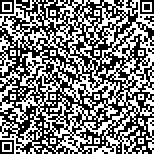杨婷,陈慧柚,高政,等.经颅直流电刺激联合上肢机器人训练对脑卒中后偏瘫上肢运动功能影响的磁共振弥散张量成像研究[J].中华物理医学与康复杂志,2021,43(9):781-786
扫码阅读全文

|
| 经颅直流电刺激联合上肢机器人训练对脑卒中后偏瘫上肢运动功能影响的磁共振弥散张量成像研究 |
|
| |
| DOI:10.3760/cma.j.issn.0254-1424.2021.09.003 |
| 中文关键词: 脑卒中 上肢运动功能 经颅直流电刺激 上肢康复机器人训练 弥散张量成像 |
| 英文关键词: Stroke Upper limb motor function Transcranial direct current stimulation Robot-assisted training Diffusion tensor imaging |
| 基金项目:南京市医学科技发展项目(YKK17122) |
|
| 摘要点击次数: 5455 |
| 全文下载次数: 6234 |
| 中文摘要: |
| 目的 观察经颅直流电刺激(tDCS)结合上肢康复机器人训练对脑卒中偏瘫上肢运动功能的影响,并通过磁共振弥散张量成像(DTI)分析其潜在的神经可塑性机制。 方法 将脑卒中偏瘫患者20例按随机数字表法分为治疗组和对照组,每组患者10例。2组患者均给予常规药物和康复治疗,治疗组在此基础上增加tDCS结合上肢康复机器人训练,即在上肢康复机器人训练的同时进行tDCS治疗,tDCS刺激电流在10 s内从0上升到1 mA,保持20 min后,在10 s从1 mA下降到0。DCS结合上肢康复机器人训练每日1次,每次20 min,连续治疗15 d。对照组则仅增加上肢康复机器人训练,tDCS治疗为假刺激。于治疗前和治疗15 d后(治疗后)采用Fugl-Meyer评定量表上肢部分(UE-FMA)和Wolf运动功能评价量表(WMFT)对2组患者的上肢运动功能进行评估。2组患者均于治疗前、后进行DTI检查。 结果 治疗后,2组患者的UE-FMA和WMFT评分较组内治疗前均显著改善,差异均有统计学意义(P<0.05),且治疗组治疗后的UE-FMA评分为(35.32±13.25)分,显著高于对照组治疗后的(21.80±13.93)分,差异有统计学意义(P<0.05)。治疗后,治疗组内囊后肢层面的FA值、rFA、FAasy和中央前回FA、CST长度与组内治疗前比较,差异均有统计学意义(P<0.05)。 结论 tDCS结合上肢康复机器人训练可显著改善偏瘫上肢运动功能,这可能是基于促进CST完整性和对称性改变的神经可塑性机制,因此临床上可以将tDCS可作为神经康复中重要的辅助治疗方法。 |
| 英文摘要: |
| Objective To observe any improvement in hemiplegic upper limb functioning when transcranial direct current stimulation (tDCS) is combined with robot-assisted upper limb treatment, and analyze the potential mechanism of neural plasticity through diffusion tensor imaging (DTI). Methods Twenty stroke survivors with hemiplegia were randomly divided into a treatment group and a control group, each of 10, according to a random number table. Both groups were treated with conventional medication and rehabilitation training using an upper limb robot, while the treatment group also received tDCS daily, with the current increasing from 0 to 1mA over 10 seconds, and then decreasing to 0 over twenty minutes. The experiment lasted for 15 days. The upper extremity portion of the Fugl-Meyer rating scale (UE-FMA) and the Wolf Motor Function Rating Scale (WMFT) were used to evaluate motor functioning before and after the treatment. DTI was also conducted for both groups. Results After the treatment, the average UE-FMA and WMFT scores of the two groups were significantly higher than before the treatment, with the average UE-FMA score of the treatment group (35.32±13.25), significantly higher than that of the control group (21.80±13.93). After the treatment there were significant differences between the groups in their average FA, rFA and FAasy of the posterior limb of the internal capsule, as well as in FA and the CST length of the central anterior gyrus. Conclusion tDCS combined with robot-assisted upper limb rehabilitation training can significantly improve the motor functioning of hemiplegic upper limbs, possibly due to neuroplasticity mechanisms that promote CST integrity and symmetry changes. tDCS can be an important adjunct therapy in clinical neurorehabilitation. |
|
查看全文
查看/发表评论 下载PDF阅读器 |
| 关闭 |